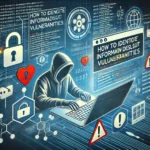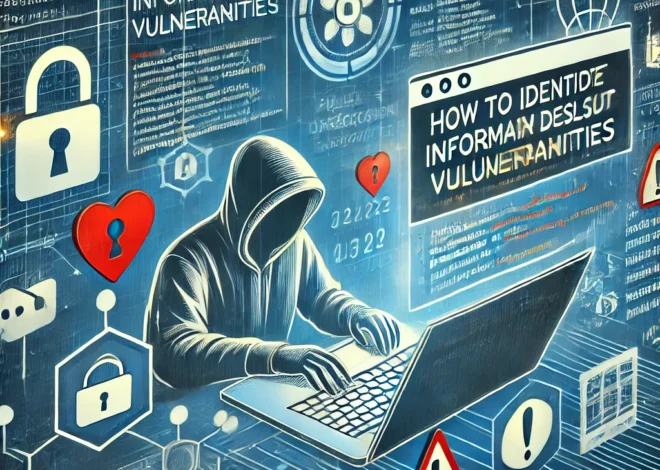
Cyber Attack Protection, Cybersecurity, & Data Protection
In today’s digital landscape, the need for robust cyber attack protection, comprehensive cybersecurity measures, and reliable data protection strategies has never been more crucial. As the cyber threat landscape continues to evolve, with a myriad of malware, phishing scams, and ransomware attacks targeting individuals and organizations alike, the imperative to safeguard digital assets and sensitive information has become paramount.
This comprehensive article delves into the intricacies of cyber attack protection, exploring the implementation of network security measures, such as firewalls and intrusion detection systems, as well as the deployment of data encryption techniques to mitigate the risks posed by cyber threats. Additionally, the article examines the importance of risk mitigation, vulnerability management, and the fostering of a strong cybersecurity awareness culture within organizations.
By understanding the evolving nature of cyber threats and the strategies to enhance cyber resilience, individuals and businesses can effectively protect their digital assets, safeguard sensitive data, and ensure business continuity in the face of increasingly sophisticated cyber attacks. Through the implementation of cybersecurity solutions, best practices, and the adoption of emerging cybersecurity technologies, organizations can fortify their cyber defense and maintain a proactive stance against cyber threat prevention.
This article aims to provide readers with the knowledge and practical insights necessary to navigate the complex world of cyber attack protection, cybersecurity, and data protection, empowering them to make informed decisions and take the necessary steps to safeguard their digital ecosystems.
Key Takeaways
- Understand the evolving cyber threat landscape and its impact on individuals and organizations.
- Implement robust cybersecurity measures, including firewalls, intrusion detection systems, and data encryption.
- Foster a strong cybersecurity awareness culture within your organization through employee training.
- Conduct risk assessments and address vulnerabilities to strengthen your security posture.
- Develop comprehensive incident response and disaster recovery plans to enhance cyber resilience.
Understanding the Cyber Threat Landscape
In today’s hyper-connected world, the cyber threat landscape is continuously evolving, posing significant risks to individuals, businesses, and critical infrastructure. As technology advances and the digital ecosystem expands, cybercriminals are becoming increasingly sophisticated in their tactics, employing a wide range of cyber threats to infiltrate systems, steal sensitive data, and disrupt operations.
Types of Cyber Threats
The types of cyber threats that organizations face include, but are not limited to, malware, phishing, ransomware, and advanced persistent threats (APTs). Malware, such as viruses, worms, and Trojans, can infiltrate systems and compromise data integrity, while phishing attacks leverage social engineering techniques to trick individuals into revealing sensitive information. Ransomware, a particularly devastating threat, holds data hostage until a ransom is paid, often causing significant disruption and financial losses.
Impact of Cyber Attacks
The impact of cyber attacks can be far-reaching, affecting both individuals and organizations. Cyber attacks can lead to the loss of sensitive data, financial losses, reputational damage, and in some cases, even physical harm to critical infrastructure. The consequences of a successful cyber attack can be devastating, undermining an organization’s cyber resilience and disrupting its ability to operate effectively.
Evolution of Cyber Threats
The evolution of cyber threats is driven by various factors, including the rapid advancement of cybersecurity technology, the proliferation of connected devices (the Internet of Things), and the growing sophistication of cybercriminals. As new vulnerabilities are discovered and exploited, cyber threats continue to adapt and become more complex, requiring organizations to constantly re-evaluate their cyber risk mitigation strategies.
Understanding the dynamic nature of the cyber threat landscape is crucial for developing effective cyber attack protection and cybersecurity strategies. By staying informed about the latest cyber threats and their potential impact, organizations can proactively implement measures to safeguard their digital assets and enhance their overall cyber resilience.
Cyber Attack Protection: Safeguarding Your Digital Assets
Effective cyber attack protection lies at the core of a robust cybersecurity strategy. As the digital landscape continues to evolve, organizations must prioritize the implementation of strong cybersecurity measures to safeguard their valuable digital assets. This comprehensive approach not only enhances network security and endpoint security, but also fosters a culture of cybersecurity awareness among employees.
Implementing Strong Cybersecurity Measures
Layered security is the foundation of effective cyber attack protection. This includes deploying advanced firewalls and intrusion detection systems to monitor and prevent unauthorized access attempts, as well as implementing comprehensive antivirus and anti-malware solutions to detect and mitigate the impact of malicious software. Regular software updates and patch management are also crucial in addressing known vulnerabilities and maintaining a resilient security posture.
Firewalls and Intrusion Detection Systems
Firewalls act as the first line of defense, controlling and monitoring the flow of network traffic to prevent unauthorized access and block potential threats. Complementing firewalls, intrusion detection systems continuously monitor network activities and alert security teams to any suspicious or anomalous behavior, enabling them to quickly respond and mitigate potential cyber attacks.
Employee Cybersecurity Awareness Training
While technological solutions are essential, the human factor plays a crucial role in cyber attack protection. Comprehensive employee cybersecurity awareness training empowers individuals to recognize and respond appropriately to various types of cyber threats, such as phishing attempts, social engineering tactics, and unsecured access to sensitive information. By fostering a strong security culture, organizations can significantly reduce their vulnerability to human-centric cyber threats and reinforce their overall cybersecurity best practices.
Cybersecurity: A Comprehensive Approach
To effectively protect against cyber threats and safeguard critical digital assets, organizations must adopt a comprehensive cybersecurity approach. This approach encompasses several key components, each playing a crucial role in enhancing an organization’s cyber resilience and security posture.
Risk Assessment and Vulnerability Management
The foundation of a robust cybersecurity strategy begins with risk assessment and vulnerability management. Organizations must conduct thorough risk assessments to identify and prioritize potential threats, vulnerabilities, and the associated risks. By understanding their unique threat landscape, they can allocate resources effectively and implement targeted security measures to mitigate the most pressing cyber risks.
Vulnerability management is a critical aspect of this comprehensive approach. Regular vulnerability assessments and prompt patching of identified vulnerabilities can significantly reduce an organization’s attack surface and enhance its overall security posture.
Incident Response and Disaster Recovery Planning
Even with the most stringent cybersecurity measures in place, the possibility of a successful cyber attack remains. Incident response planning is essential to ensure that organizations are prepared to effectively detect, contain, and respond to such incidents.
Complementing incident response, disaster recovery planning focuses on the ability to restore normal business operations following a cyber attack or other disruptive event. By implementing robust business continuity strategies, organizations can minimize the impact of successful cyber incidents and ensure the continued availability of critical systems and data.
Data Protection: Securing Sensitive Information
In the digital age, safeguarding sensitive data has become a critical priority for individuals and organizations alike. This section delves into the essential elements of data protection, exploring various techniques and strategies to secure the confidentiality, integrity, and availability of sensitive information.
Data Encryption Techniques
One of the fundamental pillars of data protection is the implementation of robust data encryption techniques. By employing both symmetric and asymmetric encryption methods, organizations can effectively shield their sensitive information from unauthorized access and ensure its integrity during storage and transmission. These advanced encryption protocols play a crucial role in maintaining the data privacy and data security that modern businesses and individuals demand.
Access Controls and Identity Management
Alongside encryption, access controls and identity management systems are essential components of a comprehensive data protection strategy. By implementing stringent access restrictions and verifying the identities of users, organizations can significantly reduce the risk of unauthorized access to sensitive data. These measures help to enforce data governance policies and ensure that only authorized individuals can interact with critical data assets.
Backup and Recovery Strategies
In the event of a data security breach, natural disaster, or other disruptive incident, reliable backup and recovery strategies are crucial for safeguarding sensitive information and ensuring business continuity. By maintaining comprehensive backups, organizations can quickly restore their data assets and minimize the impact of such events, ultimately strengthening their overall data protection and cyber resilience.

Network Security: Fortifying Your Digital Defenses
As the backbone of our digital landscapes, network security plays a crucial role in safeguarding organizations and individuals against a wide array of cyber threats. In this section, we delve into the strategies and solutions that can help fortify your network’s defenses, ensuring the integrity and confidentiality of your digital assets.
Secure Network Architecture
Implementing a secure network architecture is the foundation of robust network security. This approach involves segmenting your network into logical zones, each with its own set of access controls and monitoring mechanisms. By adopting network segmentation, you can create multiple layers of defense, limiting the damage and spread of potential cyber attacks. Additionally, network monitoring and network access control measures help you maintain vigilance over your network’s activities, identify anomalies, and swiftly respond to any suspicious behavior.
Virtual Private Networks (VPNs)
In an era of remote work and distributed teams, virtual private networks (VPNs) have become an essential tool for network security. VPNs establish a secure, encrypted tunnel between your device and the network, protecting your data in transit and ensuring the confidentiality of your communications. By leveraging VPNs, you can safeguard your remote access to corporate resources, mitigating the risks associated with public Wi-Fi or untrusted networks.
Malware Defense: Combating Malicious Software
In the ever-evolving digital landscape, malware defense has become a critical component of comprehensive cyber attack protection. Malicious software, such as viruses, worms, Trojans, and ransomware, pose a constant threat to the security and integrity of our digital assets. To effectively combat these malware threats, organizations must deploy a multi-layered approach that combines antivirus and anti-malware solutions with robust patch management and software update processes.
Antivirus and Anti-Malware Solutions
Deploying antivirus and anti-malware solutions is a fundamental step in malware prevention. These tools utilize advanced malware detection algorithms and real-time monitoring to identify, quarantine, and eliminate a wide range of malicious software. By regularly updating these solutions, organizations can stay ahead of the latest malware threats and ensure their endpoint protection remains effective.
Patch Management and Software Updates
Alongside antivirus and anti-malware measures, a robust patch management and software update process is essential for malware defense. Cybercriminals often exploit known vulnerabilities in software and operating systems to infiltrate systems and deploy malware. By promptly applying software updates and security patches, organizations can address these vulnerabilities and malware removal becomes more manageable.
By integrating antivirus and anti-malware solutions with comprehensive patch management and software update practices, organizations can create a formidable defense against the ever-evolving malware threats, effectively safeguarding their digital ecosystem and ensuring the overall security of their operations.
Cyber Attack Protection, Cybersecurity, Cyber threats, Data protection
This section serves as a crucial summary and reinforcement of the key concepts covered throughout the article. It reiterates the paramount importance of a comprehensive approach to cyber attack protection, cybersecurity, and data protection in order to effectively mitigate cyber threats and safeguard digital assets.
The section emphasizes the need for a multi-layered security strategy that combines technical measures, employee training, and incident response planning to build cyber resilience and ensure business continuity in the face of evolving cyber challenges. By adopting a holistic approach to security measures and cyber defense, organizations can significantly enhance their ability to threat mitigation and data security.
“Cybersecurity is not just a technical challenge; it is a strategic imperative that requires a comprehensive and proactive approach to protect against cyber attacks and safeguard critical data protection.”
The section underscores the need for individuals and organizations to continuously evaluate and strengthen their cybersecurity practices to keep pace with the dynamic cyber threat landscape. By implementing a blend of technical controls, employee training, and incident response planning, businesses can build the necessary cyber resilience to withstand and recover from cyber incidents, ensuring the continuity of their operations and the protection of their valuable data security.
Emerging Cybersecurity Technologies
As the digital landscape continues to evolve, the cybersecurity industry is embracing a range of innovative technologies to enhance its defenses against the ever-growing threat of cyber attacks. In this section, we’ll explore how artificial intelligence (AI) and machine learning (ML) are revolutionizing the field of cybersecurity innovation, as well as the potential of cloud security solutions and the unique security challenges posed by the Internet of Things (IoT).
Artificial Intelligence and Machine Learning
The integration of AI and ML has been a game-changer in the world of cyber threat detection and response. These technologies have the ability to analyze vast amounts of data, identify patterns, and detect anomalies at a scale and speed that far surpasses human capabilities. By leveraging AI-powered algorithms, cybersecurity professionals can now automate and streamline various security processes, from threat identification to incident response, resulting in more efficient and effective automated security measures.
Cloud Security Solutions
The rapid growth of cloud computing has also presented new opportunities for enhancing cybersecurity. Cloud-based security solutions offer organizations the ability to scale their security infrastructure quickly, while also benefiting from the inherent scalability, accessibility, and cost-effectiveness of the cloud. These cloud-based security solutions often include features such as data encryption, identity and access management, and advanced threat monitoring, providing a comprehensive and resilient approach to data protection.
Internet of Things (IoT) Security
The proliferation of IoT devices has introduced a new set of cybersecurity challenges. The sheer volume and diversity of these connected devices, combined with their often-limited security features, have created a vast attack surface for cybercriminals to exploit. Securing IoT environments requires a multilayered approach, including device authentication, firmware updates, and network segmentation, to mitigate the risks associated with IoT security.

Cyber Resilience: Preparing for the Unexpected
As the digital landscape continues to evolve, organizations must prioritize building cyber resilience – the ability to withstand and recover from cyber incidents. This section delves into the critical components of cyber resilience, empowering businesses to effectively navigate the unexpected and safeguard their operations.
Business Continuity Planning
At the heart of cyber resilience lies business continuity planning. Proactive organizations recognize the need to develop and regularly update comprehensive plans that ensure the continuity of their critical business functions in the event of a successful cyber attack. By anticipating potential disruptions and implementing robust disaster recovery strategies, businesses can minimize the impact of cyber incidents and maintain their operations during times of crisis.
Incident Response and Forensics
Complementing business continuity planning, effective incident response and cyber incident forensics capabilities are essential for building cyber resilience. Organizations must be prepared to swiftly detect, investigate, and mitigate the impact of cyber attacks. Robust incident response protocols, coupled with the ability to conduct thorough cyber forensic analyses, enable organizations to identify the root causes, implement appropriate remediation measures, and strengthen their overall cyber defense strategies.
Cybersecurity Best Practices for Individuals and Organizations
Maintaining a strong cybersecurity posture is crucial for individuals and organizations alike in the face of evolving cyber threats. This section outlines essential cybersecurity best practices that can help safeguard digital assets and enhance overall organizational security culture.
Password Management and Two-Factor Authentication
One of the fundamental cybersecurity best practices is the implementation of robust password management strategies. This includes the use of strong, unique passwords for each account, regular password updates, and the adoption of two-factor authentication (2FA) wherever available. By leveraging 2FA, you can significantly enhance the security of your online accounts and protect against unauthorized access.
Secure Software Development Practices
For organizations, ensuring secure software development practices is crucial in mitigating cyber risks. This includes the adoption of secure coding techniques, regular software updates and patches, and the implementation of secure software development life cycle (SDLC) methodologies. By prioritizing secure software development, organizations can reduce the risk of vulnerabilities and improve the overall cyber resilience of their digital infrastructure.
Regulatory Compliance and Industry Standards
Adhering to relevant regulatory compliance requirements and industry security standards is essential for organizations to demonstrate their commitment to data protection and cyber attack protection. From the General Data Protection Regulation (GDPR) to sector-specific standards like the Payment Card Industry Data Security Standard (PCI DSS), organizations must stay informed and implement the necessary controls to ensure compliance and mitigate legal and financial risks.
Cyber Threat Intelligence and Information Sharing
In the ever-evolving world of cybersecurity, the ability to gather, analyze, and share cyber threat intelligence has become a critical component of a robust defense strategy. By leveraging threat intelligence platforms, organizations can proactively identify, mitigate, and respond to emerging cyber threats, significantly enhancing their overall cyber resilience.
Threat Intelligence Platforms
Threat intelligence platforms offer a comprehensive solution for cyber threat detection and mitigation. These platforms integrate data from various sources, including security feeds, government advisories, and industry-specific intelligence, to provide organizations with actionable insights into the latest cyber threats. By analyzing this information, security teams can stay ahead of the curve, anticipate potential attacks, and implement proactive security measures to protect their digital assets.
Public-Private Partnerships
Effective cyber threat intelligence and information sharing often rely on the collaboration between the public and private sectors. Public-private partnerships facilitate the exchange of critical threat data, best practices, and cybersecurity strategies, fostering a collaborative cybersecurity approach. This collaborative effort empowers organizations to stay ahead of the evolving cyber threat landscape and enhance their overall cyber threat analysis capabilities.
Conclusion
As we conclude this comprehensive exploration of cyber attack protection, cybersecurity, and data protection, it’s clear that a multifaceted approach is essential to safeguard digital assets and mitigate the growing threat of cyber attacks. The article has highlighted the importance of understanding the evolving cyber threat landscape, implementing robust cybersecurity measures, and securing sensitive data protection to build cyber resilience within organizations.
Throughout the article, we’ve emphasized the need for individuals and organizations to continuously evaluate and enhance their security measures to keep pace with the ever-changing cyber threat environment. By adopting a proactive mindset and leveraging the latest cybersecurity best practices, businesses can effectively defend against cyber threats and protect their critical digital infrastructure.
The key to achieving this lies in a comprehensive strategy that combines technical controls, employee training, incident response planning, and the strategic deployment of emerging cybersecurity technologies. Through this holistic approach, organizations can not only mitigate data security risks but also build the necessary cyber resilience to withstand and recover from potential cyber incidents, ensuring the continuity of their operations in the face of evolving cyber threats.















Hey people!!!!!
Good mood and good luck to everyone!!!!!
Dogs Cane Corso in Moscow
cane-corso.moscow
Добрый день! Меня зовут Шестаков Юрий Иванович, я врач-косметолог с многолетним опытом работы в области эстетической медицины. Сегодня я отвечу на ваши запросы и поделюсь полезной информацией о удалении папиллом с помощью лазера. Моя цель — помочь вам понять, как безопасно и эффективно избавиться от папиллом и какие преимущества имеет лазерное удаление.
Существуют ли побочные эффекты после лазерного удаления папиллом?
Побочные эффекты после лазерного удаления папиллом обычно минимальны и могут включать покраснение, отек, легкое кровотечение и образование корочки на месте удаления. В редких случаях могут возникнуть инфекционные осложнения или изменения пигментации кожи. Все побочные эффекты обычно проходят самостоятельно в течение нескольких дней.
Are there any side effects after laser removal of papillomas?
Side effects after laser removal of papillomas are usually minimal and may include redness, swelling, slight bleeding, and crust formation at the removal site. In rare cases, infectious complications or skin pigmentation changes may occur. All side effects typically resolve on their own within a few days.
Какие побочные эффекты могут возникнуть после удаления папиллом лазером?
Побочные эффекты после удаления папиллом лазером обычно минимальны и могут включать покраснение, отек, легкие кровотечения и образование корочек на месте удаления. В редких случаях возможны инфекции и образование рубцов. Большинство побочных эффектов проходят самостоятельно в течение нескольких дней.
What are the potential side effects after laser removal of papillomas?
Side effects after laser removal of papillomas are usually minimal and may include redness, swelling, slight bleeding, and crust formation at the removal site. In rare cases, infections and scarring may occur. Most side effects resolve on their own within a few days.
GK Peresvet: винтовые сваи для различных типов грунта
GK Peresvet: куплю винтовые сваи недорого
Как улучшить когнитивные функции с ноотропами от магазина Биохакер Хост
Биохакер: интернет магазин ноотропов
Hey people!!!!!
Good mood and good luck to everyone!!!!!
5 ways to save money when renting a car, without losing quality and safety